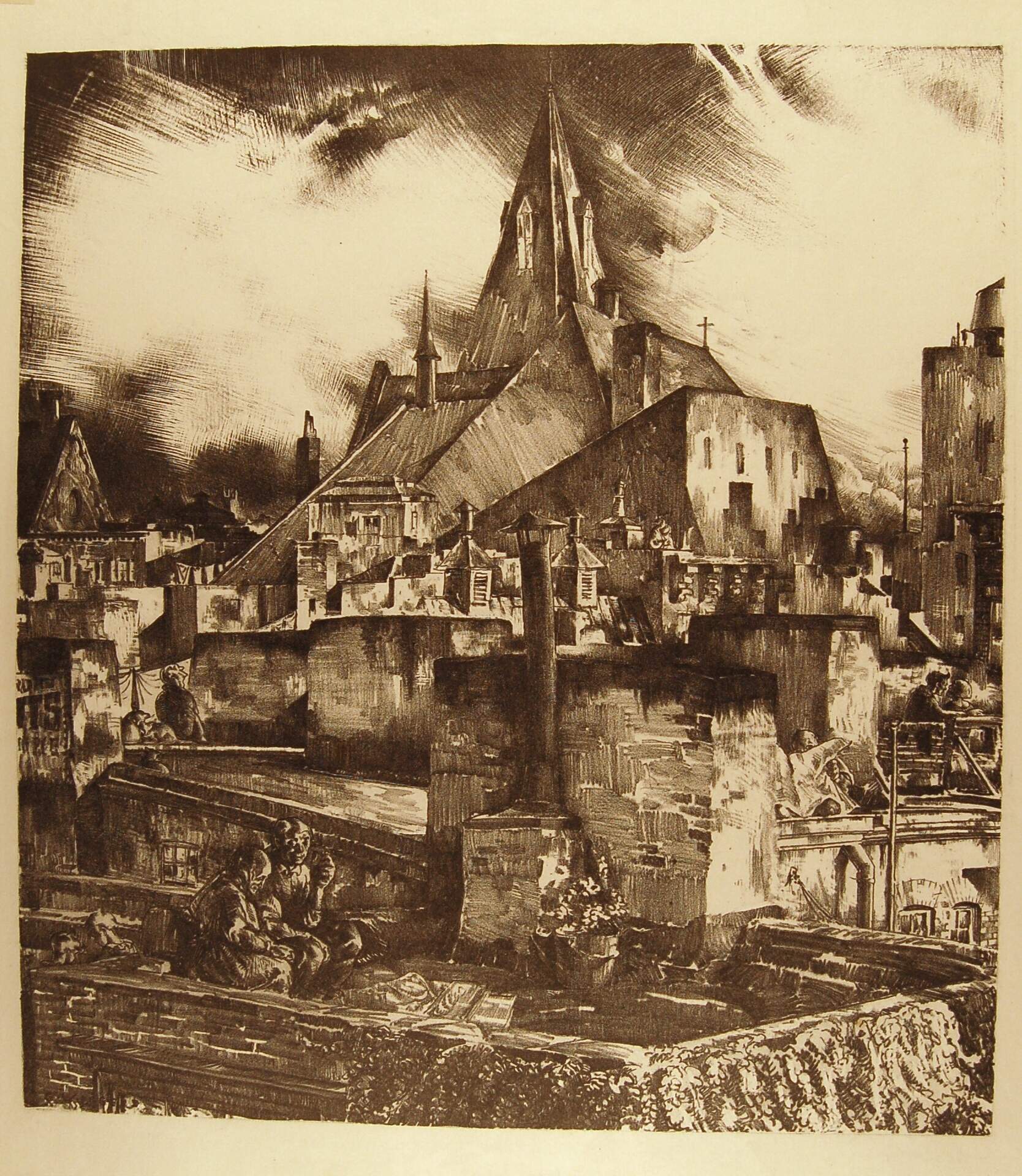
George William Eggers (1883-1958), Untitled (Figures on House Tops in City), undated; lithograph on paper, 14 3/16 x 13 inches; Gift of Bernard Karpel, 1975
George William Eggers (1883-1958)
Past
Jun 26, 2010 - Oct 10, 2010
George William Eggers was born in Dunkirk, New York on the shores of Lake Erie in 1883. He was trained as an artist at the Pratt Institute Art School in Brooklyn. He studied lithography with master printer Bolton Brown, who assisted him in printing several works. In 1906 he began teaching at the Chicago Normal School, an institution established for the training of public school teachers. He served there as the head of the department of graphic arts. Incidentally, Buffalo State College was founded as a Normal School in 1871 and is still a leading institution in the field of education.
In 1908 at a conference for the National Education Association in Cleveland, Ohio, he presented a paper that argued for the importance of art education in public schools. He said that later in life the student would go “into far subtler discriminations, hearkening to those whispered preferences within his own nature … making himself sensitive to finenesses in things beyond the mere adequacy of them.” He began the paper by saying “A land gifted by nature with fabulous resources is awakening after a century of wastefulness to the fact that those resources are not boundless.” He argued that art education would help us become a more efficient nation.
In 1913 Eggers wrote a number of articles for The School Arts Magazine called “Just How to Do It.” In these essays he explained formal procedures for creating a watercolor wash, using color scales, and drawing trees. He also explained the process of planning and mounting an exhibition, and wrote about decorating a Christmas tree as a problem in applied design.
In 1916 he was hired as the director of the Art Institute of Chicago where he served until 1921. During his tenure he oversaw the reorganization of the institution and the first permanent installation of works from the museum’s collection. He was instrumental in bringing a comprehensive exhibition of American sculpture to Chicago from the Albright Art Gallery in Buffalo, New York. He was also central to the creation of the Institute’s Art Extension program which was “A program of exhibits and accompanying lectures … designed to emphasize the claims of art, not only as a record of human achievement, but also as a vital factor in the formation of the character of the individual, an absolute essential in the education of the child, and a potent force in the welfare of the community.” The program relied on the notion that “Any educational effort, to be of definite and permanent value, should appeal to the interest of every class in the community. The program of work should be cumulative in interest and should be continued from year to year.”
Eggers served as director of the Denver Museum of Art from 1921 until 1926. During his tenure there he wrote and edited a column called “Artists and Art Notes” for the Rocky Mountain News. He was director of the Worcester Art Museum from 1926-30, and chairman of the Fine Arts Department of the College of the City of New York from 1930-48. Eggers focused his “anointed eye” (see “Elements of Beauty in Printing” in the Collection Study Room cases) on contemporaries with essays for museums and publications including renowned printer Gustav Baumann. In 1931 he wrote a biography of American artist George Bellows, who also collaborated with printer Bolton Brown.
George Eggers was a committed educator, arts administrator, and an accomplished artist. He was awarded the Logan Prize for Drawing by the Art Institute of Chicago in 1932. His artwork is in numerous private collections and in the public collections of the Museum of Art at the Rhode Island School of Design, the Los Angeles Art Museum, the Art Institute of Chicago, the New York Public Library, and the Honolulu Academy of Arts.